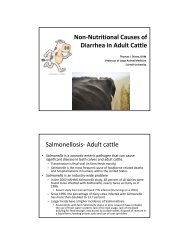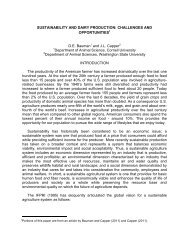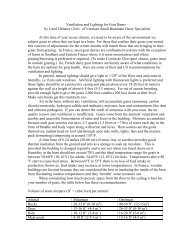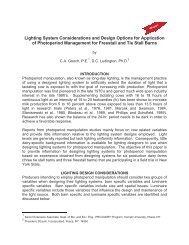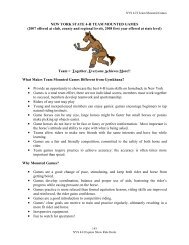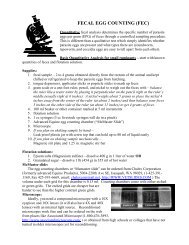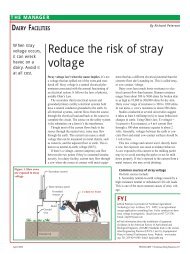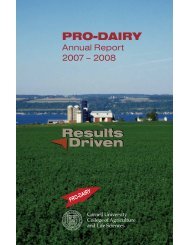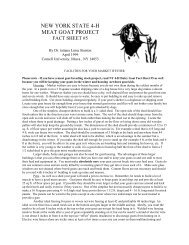1 GOAT SEMEN COLLECTION AND PROCESSING BY DR. LOUIS ...
1 GOAT SEMEN COLLECTION AND PROCESSING BY DR. LOUIS ...
1 GOAT SEMEN COLLECTION AND PROCESSING BY DR. LOUIS ...
Create successful ePaper yourself
Turn your PDF publications into a flip-book with our unique Google optimized e-Paper software.
Sperm cellular abnormalities are categorized as primary and secondary<br />
abnormalities. Primary abnormalities are those that have occurred during spermatogenesis.<br />
Secondary abnormalities are those that have occurred during the later stages of<br />
development, during ejaculation, or during the collection process (Herrick and Self, 1962).<br />
Primary abnormalities are reported by Herrick (1962) and include all abnormalities of the<br />
head, coiled tails, double forms (two heads, midpieces, or tails, abaxial midpieces<br />
(midpieces that attach to the head off-center), medusa formations (ciliated globular<br />
masses), abortive tails and spheroids (round headed sperm). Secondary abnormalities<br />
include loose heads, droplets of cytoplasm on the tail or midpiece, bent tails, detached<br />
heads, and bodies in the sample other than spermatozoa (red blood cells, white blood cells,<br />
bacteria, squamous epithelial cells or spermatozoal clumps). Usually, the percentage of<br />
morphological abnormalities in the semen of a buck with normal fertility should be less than<br />
5% during the breeding season. If collections are made during the summer, the<br />
percentage of abnormalities can be expected to be higher. The percentage of<br />
morphological abnormalities in the semen of below average and poorly fertile bucks may be<br />
10-15%, and 15%+, respectively (Easton and Simmons, 1952; Huat, 1973; Ott, 1978; and<br />
Patel, 1964).<br />
Sperm can be stained with a supravital ("live-dead") stain. This helps in the<br />
visualization of morphological abnormalities and also can be used as a measure of the<br />
integrity of the cellular membrane surrounding the sperm cell. A drop of diluted semen is<br />
placed on a warmed microscope slide (37°C) and mixed with a drop of stain, such as eosin-<br />
36



